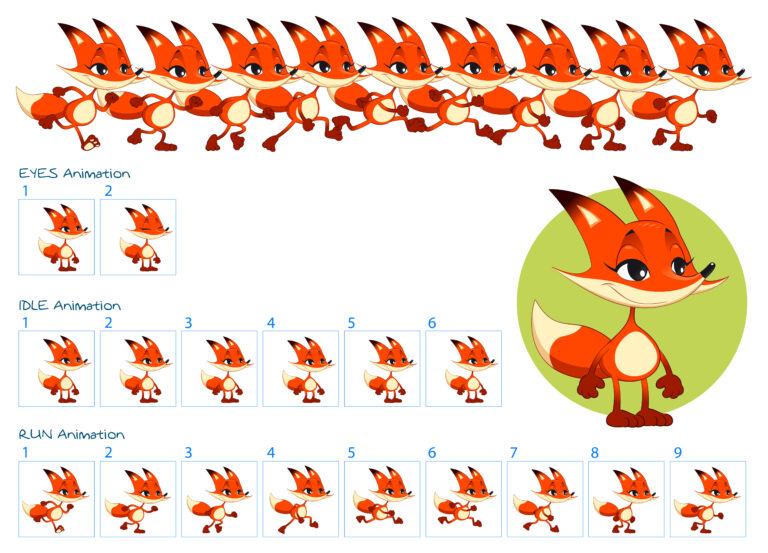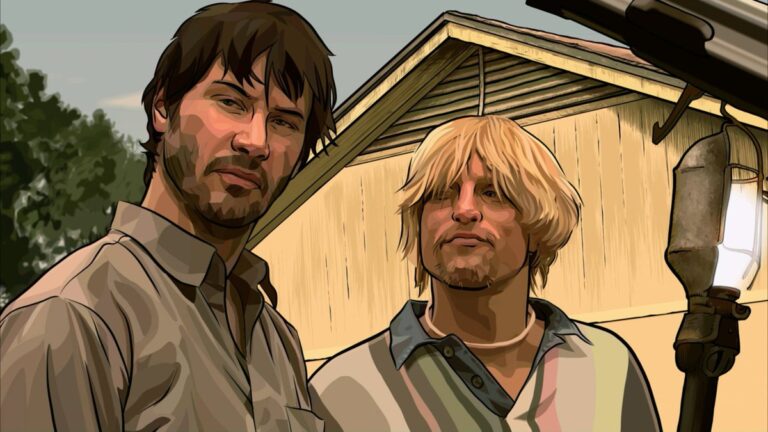In terms of contemporary art, animation is among the most fertile soil for innovation. It’s exciting, keeps you interested, and has created a whole new subgenre of visual entertainment while revolutionizing narrative art. There are many different types of animation, ranging from the very hands-on and traditional techniques to the highly technological and computer-generated methods.
Let’s explore different types of animation and examples of animations.
What Is Animation?
Animation is a technique that creates the appearance of motion in a series by photographing consecutive illustrations, figures, or even puppets to produce the illusion of movement using animation software. Since the human brain can only keep track of one image at a time, when many images flash by too quickly, the brain combines them into a single moving picture.
Drawings or paintings are made on celluloid sheets, then photographed to create conventional types of animation. It may be seen in early cartoons, but CGI has now replaced traditional animation methods for making animated films.
There are different types of animation. They’ve all made a name for themselves in their unique ways. Some of them are useful for advertising. Some are great for conveying information, while others are more entertaining. Here, we are going to find out 6 types of animation.
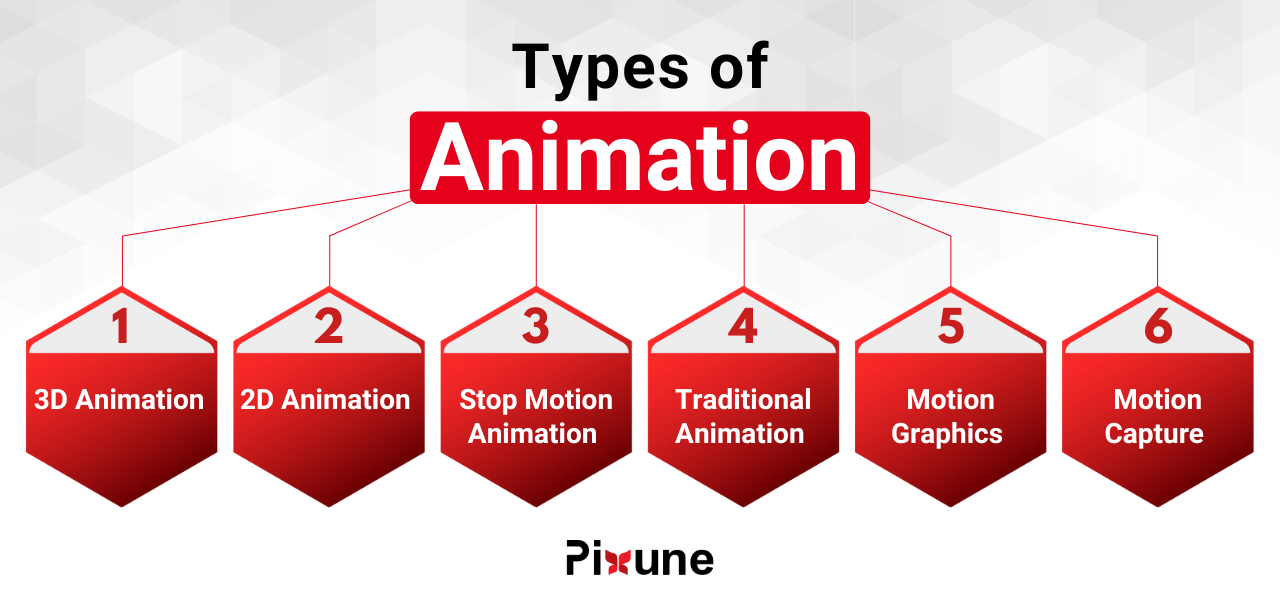
Three-dimensional (3D) animation is digitally modeled and manipulated by an animator or 3D animation agency. The animator creates 3D objects and structures, models their motions and lighting, and renders the complete animation frame-by-frame into 2D images. 3D animators need advanced animation software tools like Maya, Blender, and 3DS Max.
The advantages of 3D animation are the ability to create highly complex, visually stunning scenes and characters. The use of sophisticated software allows animators to achieve incredibly life-like and realistic results with precise control over textures, lighting, and camera angles.
3D animation pipeline allows for highly complex scenes and characters compared to 2D. It is more commonly used for animated films, visual effects, game trailers, commercial videos, explainer videos, and music videos.
Popular Examples: Frozen, The Incredibles, the Shrek series, and the Toy Story series
Below, you can see Corsair’s special video for Halloween, created by Pixune’s 3D artists:
Read More: How Much Does a 3D Animation Cost?

Need 3D Animation Services?
Visit our 3D Animation Service page to see how we can help bring your ideas to life!
CGI Animation
CGI animation, mostly used in live-action movies, is made by blending animation and reality. In this process, animated elements are inserted into a real-life setting. Through CGI animation, creatives can create a whole new universe from their imaginations. CGI animation can be blended with 2D and 3D environments to achieve detailed and intricate effects. Since its beginning in the 1970s, CGI animation has revolutionized the animation, game, and film industries.
Here is an example of CGI animation done by Pixune Studio:
Computer Animation
Computer animation is the process of creating moving images by using special software and digital tools to be used in movies, games, and other media. This is a modern-day animation production method that saves lots of time and is way more efficient than traditional methods. This type of animation has been in use since the late 20th century and has transformed the industry vastly. Pixar’s Toy Story (1995) is one of the early examples of computer animation and was hugely admired by the critics and the general audience. There is a broad range of software used by computer animators to achieve the desired final look, and each presents something unique.
Two-dimensional (2D) animation is digital animation that is created and projected in two dimensions. Artists use traditional animation and computer-assisted animation techniques like interpolated morphing, onion skinning, and rotoscoping to create different types of 2D animation.
The most popular example of commercial video in the 2D animation industry is 2D computer graphics like Flash animation. Powerful animation software allows animators to add professional animation effects like smooth scaling, morphing, and warping easily. 2D animation services are commonly used for websites, cartoons, anime, advertisements, and video games.
The advantages of a 2D animation pipeline are lower budgets required compared to 3D and quick production. The simplified character designs also allow animators to easily change facial expressions and body movements.
Popular Examples: The Simpsons, Mickey Mouse, Pokémon, and Super Mario
Check out this amazing animated 2D game trailer created by Pixune Studio inserted below!
Read More: How Much Does a 2D Animation Cost?
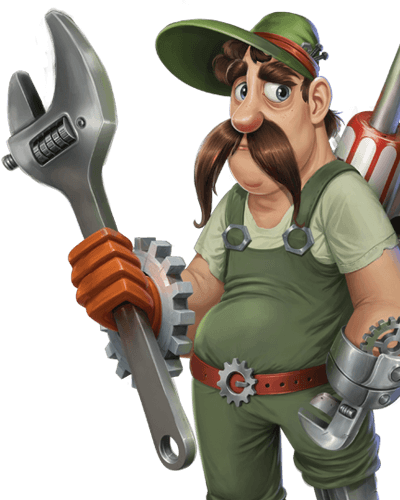
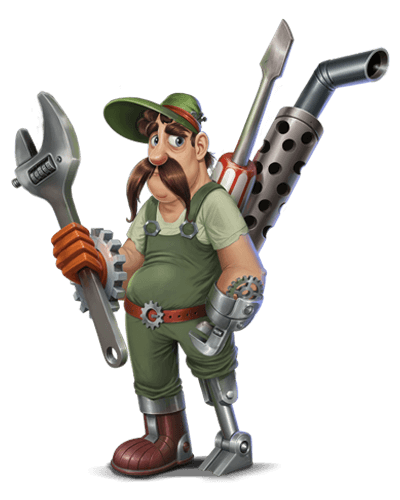
Need 2D Animation Services?
Visit our 2D Animation Service page to see how we can help bring your ideas to life!
2D Vector Animation
Vector animation is a type of animation in which vectors are used instead of pixels as the building block for the visuals and motions. Most visuals we interact with on the internet are all pixel images known as raster or bitmap graphics. These bitmaps lead to a fixed resolution and can’t be resized without losing quality.
On the contrary, using vector graphics doesn’t have this downside. Using Vector art helps the quality by creating smooth visuals and movements, because images are displayed and resized using mathematical values instead of stored pixel values. Vector graphics consist of paths and anchor points that can create any desired shape and wouldn’t lose resolution after resizing.
2D vector animation is the art of creating high-quality 2D animation by using vectors and vector graphics. Nowadays, 2D vector animations are used a lot by studios due to their cost-efficient nature. Many modern 2D cartoons (e.g., Rick and Morty, Archer) are produced with vector-based systems to achieve attractive and engaging visuals.
Classic 2D Animation
Classic 2D animations such as The Lion King, and Beauty and the Beast are filled with a sense of nostalgia for Gen Z and millennials. Most of us grew up watching animations created in the classic 2D style, and this specific style of animation feels like home to us.
To this type of animation, animators draw images, frame by frame, on paper to create a sense of movement. Each layer is put on top of the other to create the illusion of movement. This animation style is famously used by Disney and Studio Ghibli, and despite its artistic look, it needs a lot of time and effort. One of the reasons why this style is deemed valuable is because of the manual labor put into its creation, which makes 2D classic artists very respected in the industry. This art style is also favored by anime studios and we see lots of animes produced using this type of anime.
Classic 2D animation is rich in texture and detail. Classic 2D animation is filled with authenticity, as each artist brings their own unique style to the table. Think of Hayao Miyazaki, his unmatched style, and everything he has done for the animation industry.
Stop motion animation makes physical objects appear to move on their own. The object is moved in small increments between individually photographed frames, creating the illusion of movement when the series of frames is played back at normal speed.
This technique makes stationary objects appear to exhibit autonomous motion. Physical objects are photographed one frame at a time. A variety of materials like clay, paper puppets, small figurines, Lego, Play-Doh, and everyday objects are used. Common techniques include clay animation, cutout animation, model animation, go-motion, object animation, and pixelation.
Popular Examples: King Kong, Jason and the Argonauts, and the skeleton army scenes in The Lord of the Rings trilogy
Claymation
Claymation is created by using clay characters and capturing movement through stop motion techniques. The whole project is shot frame by frame, and in each frame, the clay characters slightly move. The editors then merge all these shot frames, and the result is a natural movement on behalf of clay characters.
Claymation can be done in a variety of styles, including clay melting, clay painting, strata-cut animation, and more frequently used of all, freeform. The use of claymation in the industry goes back to the 19th century and the invention of plasticine, a putty-like modelling material that dries slowly. Most famous examples of claymations are Chicken Run (2000) and Wallace and Gromit (2005), which became very successful.
Cutout Animation
Cutout animation is created by using materials such as paper, card, and fabric. The process is pretty simple and cost-friendly. Movement is created through frame-by-frame takes of flat shapes and materials on a background. Cutout animations are mostly used by hand, but recently, digital cutout animations have entered the market.
Digital cutout animation mimics the same style, but the whole project is created using digital software. Visuals included in this type of animation are minimalistic but pretty much stylized. Despite its advantages, cutout animation can be time-consuming to create. Each character, all the scenery, and other elements should be crafted one by one. This process not only needs a lot of time, but it also needs a lot of effort.
4. Traditional Animation
Traditional animation, also called cel animation, hand-drawn animation, or frame-by-frame animation, was the process used for most animated films of the 20th century. The individual frames of a traditionally animated film are photographs of drawings painted cels on celluloid.
The drawings are drawn on sheets of paper, then traced or photocopied onto transparent acetate sheets called cels. The outlines of the drawings are inked or painted on the cels. The cells are then placed on top of painted backgrounds and photographed together frame-by-frame.
The traditional cel animation process became obsolete by the beginning of the 21st century when computer animation production began. Disney’s Chicken Little (2005) was the last animated film in Disney’s story to use the traditional animation process.
Popular Examples: Snow White, Pinocchio, Daffy Duck, Tom and Jerry, and Spirited Away
Cel Animation
Cel animation is a traditional approach in which artists draw everything from scratch on a thin, transparent sheet called a Cel (short for celluloid). The outline is drawn on one side, and the colors are painted on the other side.
After that, the animated cel is put on a previously painted background. These animated cels are then redrawn and photographed frame by frame to create movement. This style of animation dominated the 20th-century animation scene and is considered the golden age of cinema and animation.
Cel animation was popularised by Walt Disney Studios and brought brand-new movements and realism to the scene. Snow White and the Seven Dwarves (1937) and The Lion King (1994) are two of the famous examples of cel animation that achieved huge success. Cel animation is rarely used today due to the cels being expensive and highly flammable, but the style inspired the digital 2D animation.
Rotoscoping
Rotoscoping animation is a technique used to create animation by tracing over live-action footage frame by frame. This animation style gives us a life-like result with realistic movements and can be used for the production of 2D and 3D animation. Retoscoping was first used by Max Fleischer in 1915 for a live-action film. His techniques were widely used by other animators and studios as well, including Disney.
There are 2 types of retoscoping: traditional retoscoping and digital retoscoping. Traditional retoscoping is done by projecting filmed footage onto a glass panel and tracing it by hand. Digital retoscoping is created by using software like Adobe After Effects, Mocha, or Blender, which allows for more control and easier cleanup.
Flipbook
An animation flipbook uses a series of separate static images, which slowly transition one page to another in a gradual position. These images then create the illusion of movement as you turn the pages individually. Flipbook animations are created on the basis of an optical illusion called “persistence of vision.”
Our eyes can only process 10-12 separate images per second. When images appear in quicker succession than that, the brain merges them into a continuous stream. There are different types of flipbook animation, besides the basic flipbook, we have alternative flipbook, photograph flipbook, video flipbook, and mechanical flipbook.
Read More: Traditional and Digital Animation in Commons
5. Motion Graphics
Motion graphics are a series of graphic design images like words, logos, or abstract elements that create the illusion of motion. Motion graphical animation is usually combined with audio for videos, commercials, films, interactive media, and video games.
Motion graphics make use of digital animation and special effects techniques to animate text, logos, transitions, and other graphic elements. In this case, animation services are combined with cinematography and audio to build a narrative in abstract ways for television, the internet, smartphones, and transmedia storytelling.
Popular Examples: Skyfall, Catch Me If You Can, and Kung Fu Panda, as well as TV channel branding and kinetic typography videos
Typography Animation
Typography Animation, also known as kinetic typography, blends motion and text to convey emotions, tell a story, or to enunciate any type of information. Typography animation can be used in lyric videos, movie titles, trailers, advertisements and etc. It’s a good way to convey meaning and info in a specific way.
Whiteboard Animation
Whiteboard animation is done on a draw-erase whiteboard by drawing simple and doodle-like shapes with a simple pen and marker. This type of animation is usually followed by a voice-over narrating a story or any type of information. The whole process is like watching someone draw different stuff to tell a story.
Illustrations are either physically drawn and recorded (in early versions) or digitally simulated. Whiteboard animation is great for explainer videos due to their minimal look and the focus on the actual info/story. They’re also cost-effective and visually engaging, but the visual dynamism is limited and lacks emotional depth.
6. Motion Capture
Motion capture involves recording the movements of objects or people in physical space and translating those movements onto a digital model. Real-world motions are mapped to a virtual character with the help of cameras and software algorithms.
Markers or sensors are placed at specific points on a “performer’s” body to track their movements. As the performer acts out physical movements, the motion is matched to a 3D character model inside the 3D modeling software. This allows complex human anatomy and animal movements to be recorded with incredibly life-like results.
Motion capture is used to produce realistic character animations for films, games, and simulations in fields like biomechanics and ergonomics.
Popular Examples: Gollum from The Lord of the Rings, Na’vi from Avatar, Caesar from Rise of the Planet of the Apes
Full-Body Motion Capture
Full-body motion capture, or full-body mocap, is a technique used to record the digital avatar of the whole body movements of an actor in real time. These movements are then projected onto a digital character, allowing the animators to produce highly realistic animation—specifically for video games, movies, and virtual production.
For this process, actors wear special suits with special sensors on their joints (elbows, knees, shoulders, etc.).This motion data is recorded and transferred to the 3D model. Full-body motion capture is used in video games and movies for ultra-realistic movement and complicated scenes.
Facial Motion Capture
Facial motion capture (or facial mocap) technology is utilized to capture and re-create facial expressions digitally by recording an actor’s facial movements. The subtle expressions are then translated to a digital character, which allows for realistic emotion and realism in animation, mainly in films, video games, and virtual avatars.
Small reflective markers or spots are placed on the actor’s face (typically across significant muscles and features like eyebrows, mouth, cheeks). The cameras track these points as the actor performs, and the information is used to operate a 3D face rig with corresponding motion. Facial motion capture is used for video games and movies to capture subtle and natural expressions.
What is the Easiest Type of Animation?
The easiest form of animation technique for a beginner animator to start with is stop motion animation. Stop motion allows for mistakes, a stop motion artist can progress at your own pace and the required equipment is affordable. Strong creativity, imagination, and patience are more important than artistic or technical skills.
What is the Hardest Type of Animation?
The most complex type of animation is 3D animation to brings the animation ideas to life with different styles. It requires advanced software tools and computer graphics knowledge like modeling, rigging, surfaces, animating, rendering, and visual effects and is a steep learning curve. Understanding perspective, anatomy, weight, and movement in a 3D space.
How Animation Style Influences Storytelling
Animation is not just about visually pleasing scenes and various movements on behalf of characters. Animation is a way to communicate different messages through a coherent story. The chosen style for an animation sets the whole mood for it and determines how the audience experiences the outcome.
Various factors need to be considered while choosing the specific style for the animation, such as the emotional tone, target audience, visual flow, and narrative theme. Here is a quick look at each of these elements and how they’re influenced by the chosen animation type.
Visual Style Sets the Emotional Tone
Different animation styles evoke different emotions. Professional animators use this fact to suggest the desired feelings to the audience. For example, 2D animation generates a sense of nostalgia and is generally associated with traditional cartoons such as The Lion King (1994).
3D animations are very good at exhibiting subtle feelings and can be used to generate depth and realism in an attempt to achieve the cinematic look. Stop motion gives us a sense of intimacy and is somehow quirky. The chosen animation style can speak before the story itself, and that is the power of choosing the right animation type.
Style Helps Define the Target Audience
The perfect animation style should be chosen based on the target audience and their preferences. 2D animations with clear shapes and bold colors are more attractive to the younger audience, whereas more complicated animation forms, such as rotoscope or abstract animation, fit the criteria of a more sophisticated audience, looking for experimental or niche ways of storytelling.
On the other hand, 3D animation is great for a more universal appeal, due to its polished look, and is suitable for many purposes and a wide range of audiences.
Style Supports the Narrative Theme
Some kinds of animation have the ability to actually depict or play around with an idea in a narrative. The best example of one would be Spider-Man: Into the Spider-Verse, wherein multiple forms of animation were blended into one movie to depict multiple dimensions and worlds of Spider-Man. The blending itself wasn’t subjective because it played around with the idea of a multiverse.
Another excellent case in point is Loving Vincent, where oil-paint animation was used to capture the painting style and mood of Vincent van Gogh. In Waltz with Bashir, the nightmarish quality of rotoscope animation was used as an effort to highlight the topic of memory, war, and trauma.
They are utilized in order to show how the appearance of animation is applied metaphorically in the service not just of the story but of the psychological and emotional undertones of the movie.
Final words
Different types of animation allow for a range of creative expression and art styles. Simple flipbooks and 2D cartoons can convey powerful emotions and narratives. Stop motion animates the inanimate in a tactile process. 3D CGI creates stunning virtual worlds limited only by imagination. And motion graphics turn graphic elements into kinetic visual art.
Animation has grown from niche entertainment to a ubiquitous artform and storytelling medium. It brings science, information, stories, brands and experiences to life through the illusion of motion.
FAQs
Which style of animation is easiest for beginners to try?
Stop Motion is often seen as the most approachable for beginners since it requires minimal tech and allows for mistakes. You can use clay, toys, or draw on paper and move things incrementally.
Are these animation types strictly separate, or can they be combined?
For sure. Many artists blend styles. Examples include hybrid styles, like combining 2D and 3D effects or analog and digital techniques.
How does Traditional Animation differ from 2D Animation?
Traditional Animation (also called cel or hand-drawn animation) involves drawing each frame by hand on transparent sheets called cels. It was the classic method used in early Disney films.
Why is it helpful to know these six styles?
Understanding these styles empowers animators and creators to choose the right technique that fits their project’s narrative, budget, visual appeal, and timeline. It also helps audiences appreciate the breadth and diversity of animation as an art form.







